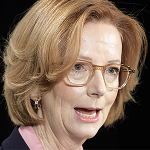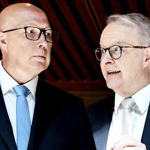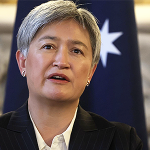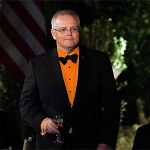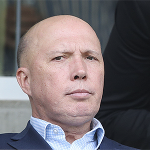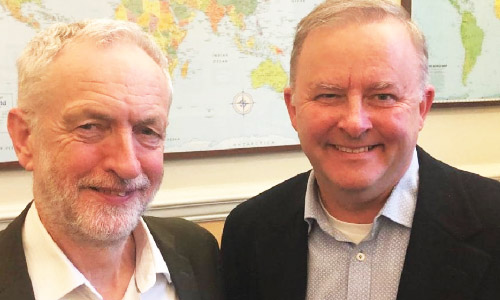The phrase divide et impera has echoed through history, its power as relevant today as it was in ancient Rome. Divide and conquer; rule through division. Rulers, then and now, have wielded this principle like a double-edged sword – deepening rifts to maintain control, ensuring that wounds never fully heal. At best, they turn into scars, waiting to be torn open again at the slightest provocation.
War is a terrible thing. And yet, even a tragedy of this scale has taught us something
In my own country, Ukraine, I’ve witnessed the devastating impact of this strategy for many years. While Western Ukrainians once called for the Donbas to be fenced off with barbed wire, people in the East labeled them neo-Nazis and Banderites. At times, political tensions led to “Orange Revolutions.” At others, backlash brought pro-Russian figures like Viktor Yanukovych to power.
For decades, Ukrainian politicians have manipulated linguistic and cultural divisions for their own gain, exploiting the country’s bilingual character – Ukrainian and Russian are both widely spoken. A society split down the middle becomes easy prey. The powerful need not invent divisions; they need only exploit the ones already there. Ukraine proved more vulnerable than many realised. We saw this clearly in 2014, when Vladimir Putin seized the moment – using ideological, linguistic, and religious rifts to annex Crimea and destabilise the Donbas, where a largely Russian-speaking, pro-Russian population lived.
But did Ukrainians learn from that trauma? Did the experience make us more tolerant of one another? Sadly, the East and West of Ukraine remained locked in a cold ideological standoff. The collective consciousness of the nation stayed divided.
In psychology, split consciousness is called schizophrenia. In political science and sociology, we use gentler terms: polarisation, social discord, conflict of interests. But the question remains: can a polarised society function in a healthy and rational way? Only as much as a person with split consciousness can.
The hard truth is that this division is not just the fault of leaders we love to blame. The deeper root lies within society itself. Power, however difficult this may be to accept, is a reflection of the people. We create the demand, and the system delivers the supply.
Imagine an anthill divided into “us” and “them,” or a beehive turned against itself. How long would it survive? How could it sustain itself?
Where there is division, confrontation is inevitable. And where confrontation exists, conflict follows. In such moments, the state may be responsible for inflicting the wound – but the people are responsible for what happens next. Do we tend to the damage? Or do we let it fester, even deepen it – for personal gain, out of fear, or sheer habit?
Take Stalin’s repressions. Millions of Ukrainians perished. But these atrocities weren’t carried out by distant officials alone – they were often driven by ordinary citizens who denounced their neighbours out of envy, revenge, greed, or simple dislike.
I remember talking with my grandmother, who survived the Holodomor, the man-made famine that devastated Ukraine. She told me how the grain-requisition squads that came to seize food were sometimes led by local villagers. These weren’t faceless agents of the regime – they were neighbours, moved by personal motives, turning against one another.
A nation isn’t just a crowd of individuals. A crowd may be loud or restless – but a nation is bound by something deeper. It becomes a people only when united by shared purpose.
That is exactly what happened in 2022, when Russia launched its full-scale invasion. Putin expected a demoralised, divided country – one that wouldn’t be able to resist. He miscalculated.
Many in the West feared Ukraine would collapse into internal strife. But those fears proved unfounded. Not only did Ukraine withstand the onslaught; it pushed back. It launched a counter-offensive that astonished the world. Because in the face of a common enemy, the nation united like never before.
As the old saying goes: There is no evil so great that some good cannot come of it.
Ukraine is not immune to internal conflict; no country is. How could it be, after serving as a battleground for Nazi and Soviet regimes, as Timothy Snyder describes in Bloodlands? For centuries, Ukraine was marched over by Mongol-Tatars, Poles, Russians, and Germans. Each came with fire and sword, leaving generations scarred by loss: conquest, repression, war, famine. The trauma became embedded in our memory. Genetic, almost.
Centuries under Russian rule left much of Ukraine “Russified,” repopulated with settlers from the East. Putin believed this made us easy prey. He imagined a quick victory – a parade in Kyiv two weeks after launching his “Special Military Operation.”
More than three years later, his army is still slogging through blood, bogged down roughly where it began in 2022.
Of course, war has introduced new tensions. Some fight. Some flee. Some call for total resistance. Others, exhausted, plead for peace, at any cost. Ukrainians have argued over the president, over military strategy, over ceasefire terms and resource deals. In wartime, there are dozens – maybe hundreds – of flashpoints.
But “war-torn” has often turned out to be a metaphor. Because behind the pain, there has also been fusion. Where there were tears, there is now stitching. What formed was not just a scar – but a healed fracture, a joining of what was once divided.
War is a terrible thing. Its toll is often immeasurable. And yet, even a tragedy of this scale has taught us something.
I learned my lesson one early morning at a Kyiv sports ground. I had come to warm up and saw a man standing near the horizontal bar. I greeted him. “Why on earth are you speaking Russian?” I asked, half-joking, but wincing.
“Why not, man?” he replied, and began to do pull-ups.
He had a prosthetic leg. I soon learned he had lost it in battle near my hometown. He had fought. I had not. He spoke Russian. I spoke Ukrainian. And yet we understood each other perfectly. So much separated us – age, background, even language – but something more important bound us together: love for Ukraine.
This war will end, as all wars eventually do. Peace will return. Elections will be held. It may be Zelensky. It may be Zaluzhny. It may be someone else entirely. But what matters most is not who leads Ukraine next – it’s how they lead.
We need a leader not with a “divide and rule” mindset, but with a “unite and serve” one. Integrity, not fragmentation. Unity, not division. That is the path to rebuilding. That is how we move forward – not just as a state, but as a people.
That is the transformation that has already begun. And that is the key to Ukraine’s future: strong, resilient, and whole.


